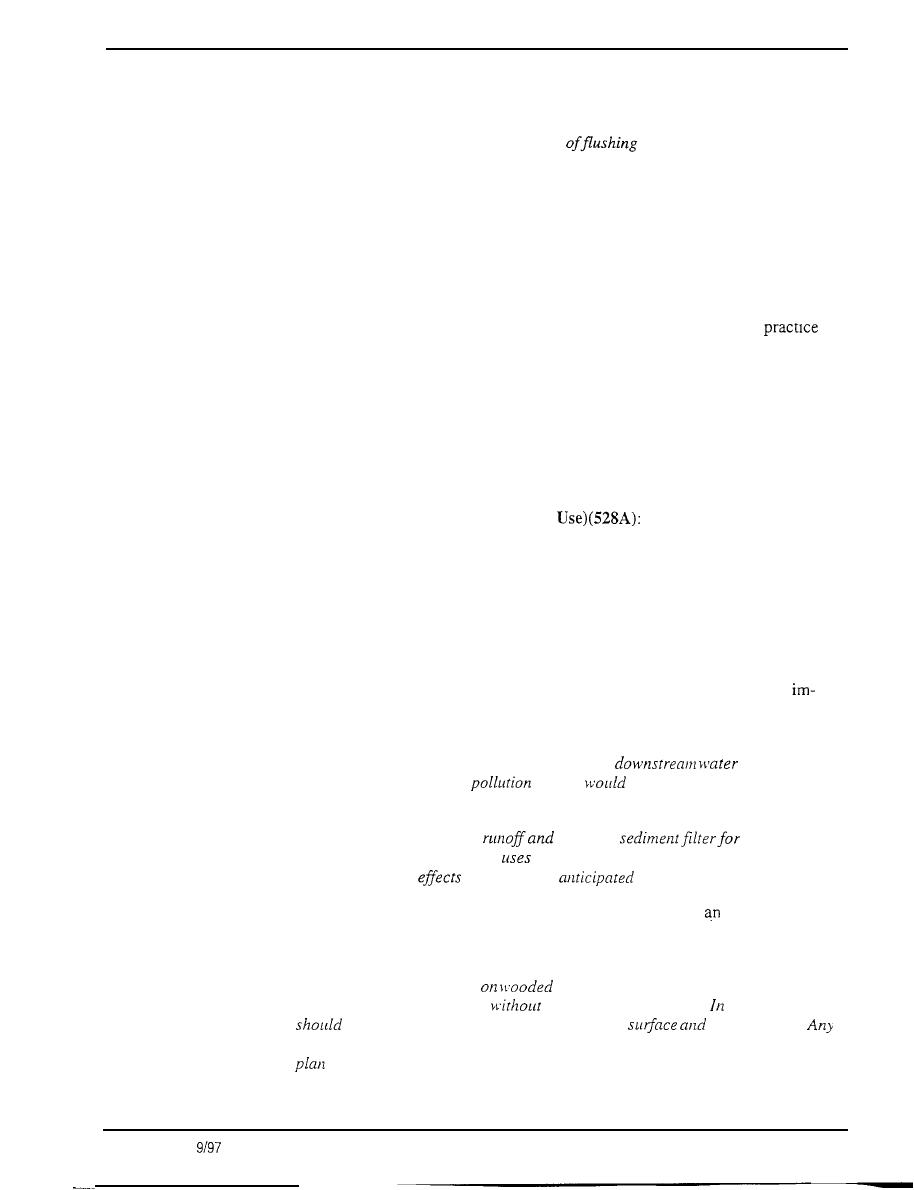
194 Chapter 10: Appendix
Ponds may trap nutrients and sediment which wash into the basin. This removes
these substances from downstream. Chemical concentrations in the pond may be
higher during the summer months. By reducing the amount of water that flows in
the channel downstream, the frequency
of the stream is reduced and
there is a collection of substances held temporarily within the channel. A pond
may cause more leachable substance to be carried into the ground water
Precision Land Forming (462): Reshaping the surface of land to planned
grades.
Prescribed Burning (338): Applying fire to predetermined areas under condi-
tions under which the intensity and spread of the fire are controlled.
the
When the area is burned in accordance with the specifications of this
nitrates with the burned vegetation will be released to the atmosphere. The ash
will contain phosphorous and potassium which will be in a relatively highly
soluble form. If a runoff event occurs soon after the bum there is a probability
that these two materials may be transported into the ground water or into the
surface water. When in a soluble state the phosphorous and potassium will be
more difficult to trap and hold in place. When done on range grasses the growth
of the grasses is increased and there will be an increased tie-up of plant nutrients
as the grasses' growth is accelerated.
Prescribed Grazing (Proper Grazing
Grazing at an intensity that
will maintain enough cover to protect the soil and maintain or improve the quan-
tity and quality of desirable vegetation
Planned grazing systems normally reduce the system time livestock spend in each
pasture. This increases quality and quantity of vegetation. As vegetation quality
increases, fiber content in manure decreases which speeds manure decomposition
and reduces pollution potential. Freeze-thaw, shrink-swell, and other natural soil
mechanisms can reduce compacted layers during the absence of grazing animals.
This increases infiltration, increases vegetative growth, slows runoff, and
pioves the nutrient and moisture filtering and trapping ability of the area.
Decreased runoff will reduce the rate of erosion and movement of sediment and
dissolved and sediment-attached substances to
courses. No
increase in ground water
hazard
be anticipated from the use of
this practice.
Increased vegetation slows
acts as a
sediments and
sediment attached substances,
more nutrients, and reduces raindrop splash.
Adverse chemical
should not be
from the rue of this practice.
Proper Woodland Grazing (530): Grazing wooded areas at
intensity that will
maintain adequate cover for soil protection and maintain or improve the quantity
and quality of trees and forage vegetation.
This practice is applicable
areas producing a significant amount of
forage that can be harvested
damage to other values. these areas there
be no detrimental effects on the quality of
ground water.
time this practice is applied there must be a detailed management and grazing
Chapter 1 O-l 94:




 Previous Page
Previous Page
